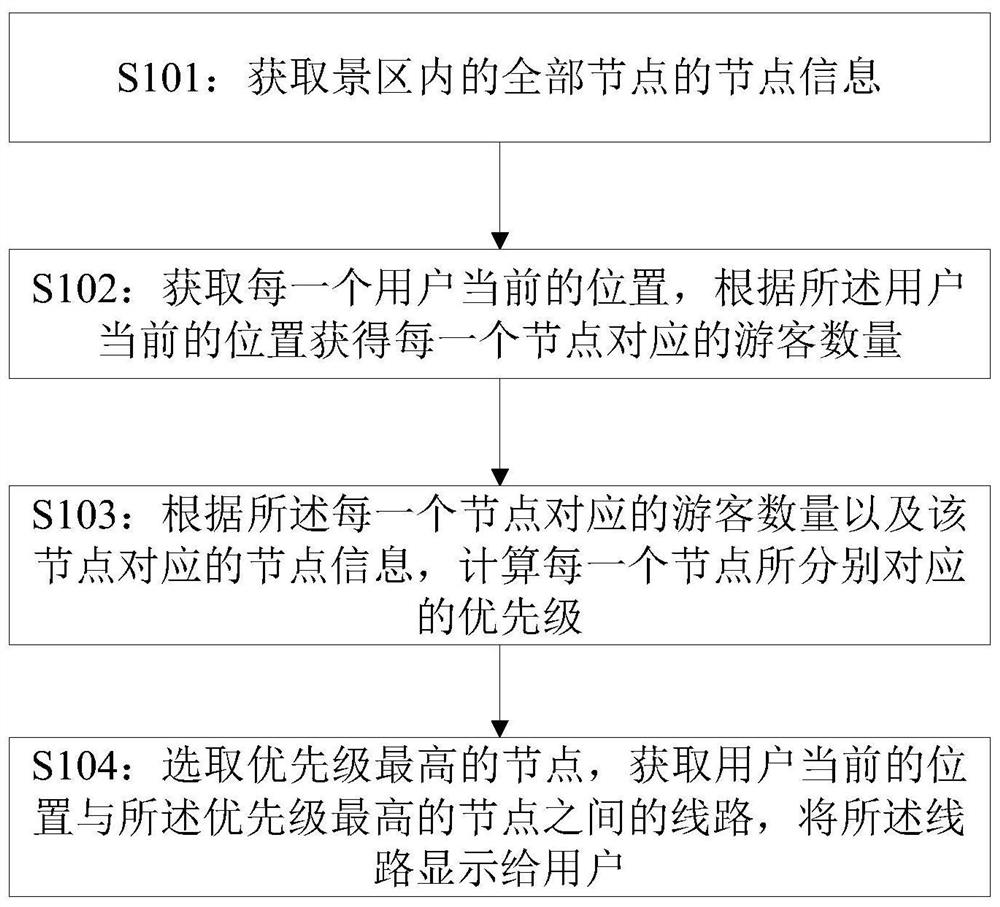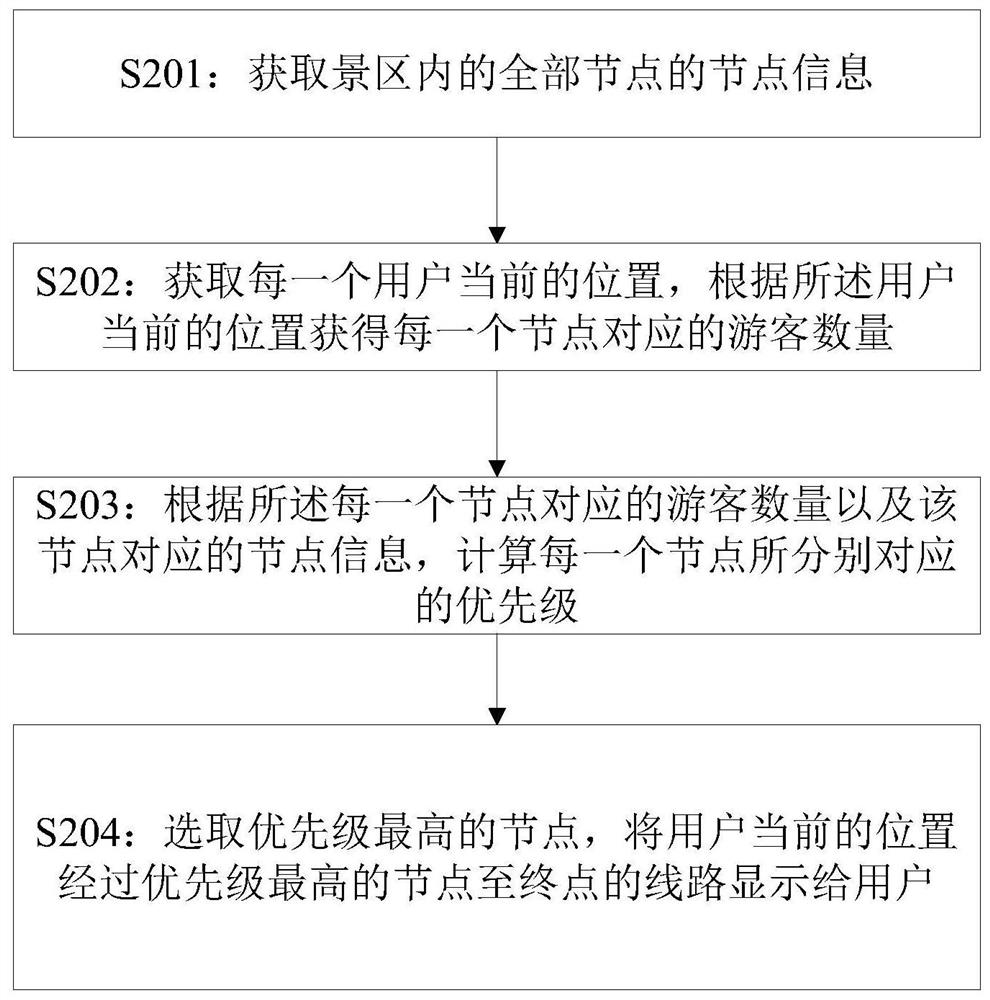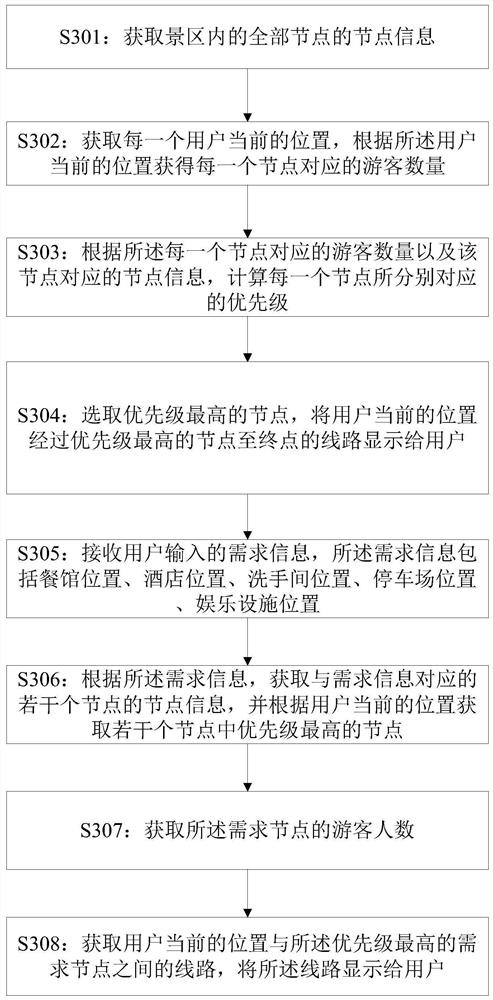Tourism man-machine interaction method and device based on artificial intelligence algorithm and electronic equipment
A human-computer interaction and artificial intelligence technology, applied in the direction of digital output to display devices, computing, instruments, etc., can solve the problem of unintelligent tourist attractions, avoid peak crowds, streamline operation structure, and efficiently manage and operate. Effect
- Summary
- Abstract
- Description
- Claims
- Application Information
AI Technical Summary
Problems solved by technology
Method used
Image
Examples
Embodiment 1
[0051] This embodiment provides a human-computer interaction method for tourism based on an artificial intelligence algorithm, which can provide tourists with the fastest and most convenient tourist routes that avoid peak flow of people.
[0052] Specifically, please refer to figure 1 , the tourism human-computer interaction method provided in this embodiment includes the following steps:
[0053] S101: Obtain node information of all nodes in the scenic spot.
[0054] In this embodiment, all scenic spots in the scenic spot and all scenic spot facilities in the scenic spot are defined as independent nodes. In this step, the node information includes the name of the scenic spot, the location of the scenic spot, and the level of the scenic spot. Wherein, the name of the scenic spot, the location of the scenic spot and the level of the scenic spot are all set in advance. The method of the embodiment of the present invention is mainly applied in tourist attractions, wherein the ...
Embodiment 2
[0068] see figure 2 , this embodiment provides a human-computer interaction method for tourism based on an artificial intelligence algorithm. The difference between this embodiment and Embodiment 1 is that this embodiment provides tourists with the best node, which combines the user's current location and destination , starting from the visitor's current location, providing a complete tour itinerary.
[0069] Specifically, the following steps are included:
[0070] S201: Obtain node information of all nodes in the scenic spot.
[0071] In this embodiment, all scenic spots in the scenic spot and all scenic spot facilities in the scenic spot are defined as independent nodes. In this step, the node information includes the name of the scenic spot, the location of the scenic spot, and the level of the scenic spot. Wherein, the name of the scenic spot, the location of the scenic spot and the level of the scenic spot are all set in advance.
[0072] S202: Obtain the current loc...
Embodiment 3
[0085] This embodiment provides a human-computer interaction method for tourism based on an artificial intelligence algorithm, see image 3 , including the following steps:
[0086] S301: Obtain node information of all nodes in the scenic spot.
[0087] In this embodiment, all scenic spots in the scenic spot and all scenic spot facilities in the scenic spot are defined as independent nodes. In this step, the node information includes the name of the scenic spot, the location of the scenic spot, and the level of the scenic spot. Wherein, the name of the scenic spot, the location of the scenic spot and the level of the scenic spot are all set in advance.
[0088] In this embodiment, the node information also includes location points of facilities in the scenic spot, and the facilities in the scenic spot include hotels in the scenic spot, restaurants in the scenic spot, toilets, medical treatment rooms, parking lots, and entertainment facilities.
[0089] S302: Obtain the curr...
PUM
 Login to View More
Login to View More Abstract
Description
Claims
Application Information
 Login to View More
Login to View More - R&D
- Intellectual Property
- Life Sciences
- Materials
- Tech Scout
- Unparalleled Data Quality
- Higher Quality Content
- 60% Fewer Hallucinations
Browse by: Latest US Patents, China's latest patents, Technical Efficacy Thesaurus, Application Domain, Technology Topic, Popular Technical Reports.
© 2025 PatSnap. All rights reserved.Legal|Privacy policy|Modern Slavery Act Transparency Statement|Sitemap|About US| Contact US: help@patsnap.com



